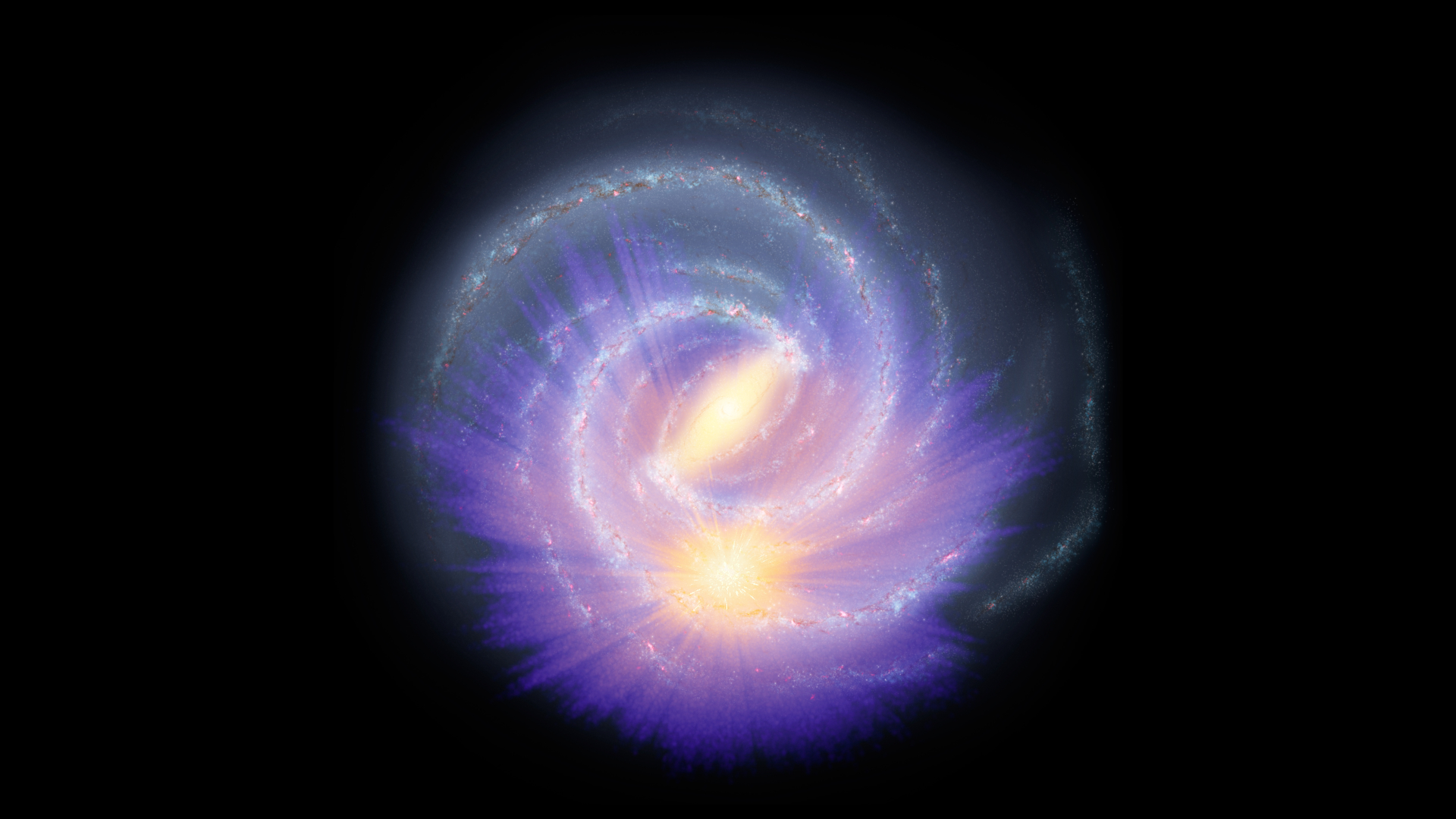Science
Related: About this forumThe Milky Way devoured another galaxy and we've spotted the remains
SPACE 22 July 2019

The Gaia space observatory showed us where the stars are – and some aren’t from here
Data: ESA/Gaia/DPAC, A. Khalatyan(AIP) & StarHorse team; Galaxy map: NASA/JPL-Caltech/R. Hurt (SSC/Caltech)
By Leah Crane
Early in the Milky Way’s history, it devoured another, smaller galaxy and made that galaxy’s stars its own. Now, astronomers have pinpointed the timing of this monstrous meal and identified which stars make up the grisly remains.
Carme Gallart at the Institute of Astrophysics of the Canary Islands in Spain and her colleagues used data from the Gaia space observatory to determine the ages of nearly 600,000 stars in our galaxy. Some of those stars are in the “thick disk”, just above or below the main disk of the galaxy, and some are in the halo, a spherical structure that extends beyond the disk.
The halo sample contained two types of stars, one with more blue stars than the other. Previous work showed that the blue stars were originally part of a smaller galaxy called Gaia-Enceladus, also known as the “sausage galaxy”, which was absorbed by the Milky Way early in its history.
Gallart and her team found that these two groups of stars had similar ages. They were probably about three billion years old when the Milky Way devoured Gaia-Enceladus about 10 billion years ago. Some of the disk stars had similar properties to the halo stars, leading the researchers to infer that they had the same origin and the merger tossed some stars from the disk into the halo.
Read more: https://www.newscientist.com/article/2210407-the-milky-way-devoured-another-galaxy-and-weve-spotted-the-remains/#ixzz5uRDaMXKF
AllaN01Bear
(18,191 posts)getting old in mke
(813 posts)CloudWatcher
(1,847 posts)It looks like there are a lot of planets around a lot of stars.
And while I've read that galaxy mergers rarely have actual star collisions, I've never seen an estimate of how destructive they are to planets. Not via collisions, but near misses tossing them out of their (assumed) stable orbits.
I'd speculate that galaxy mergers could destroy life on a lot of planets. I wonder what the simulations tell us?